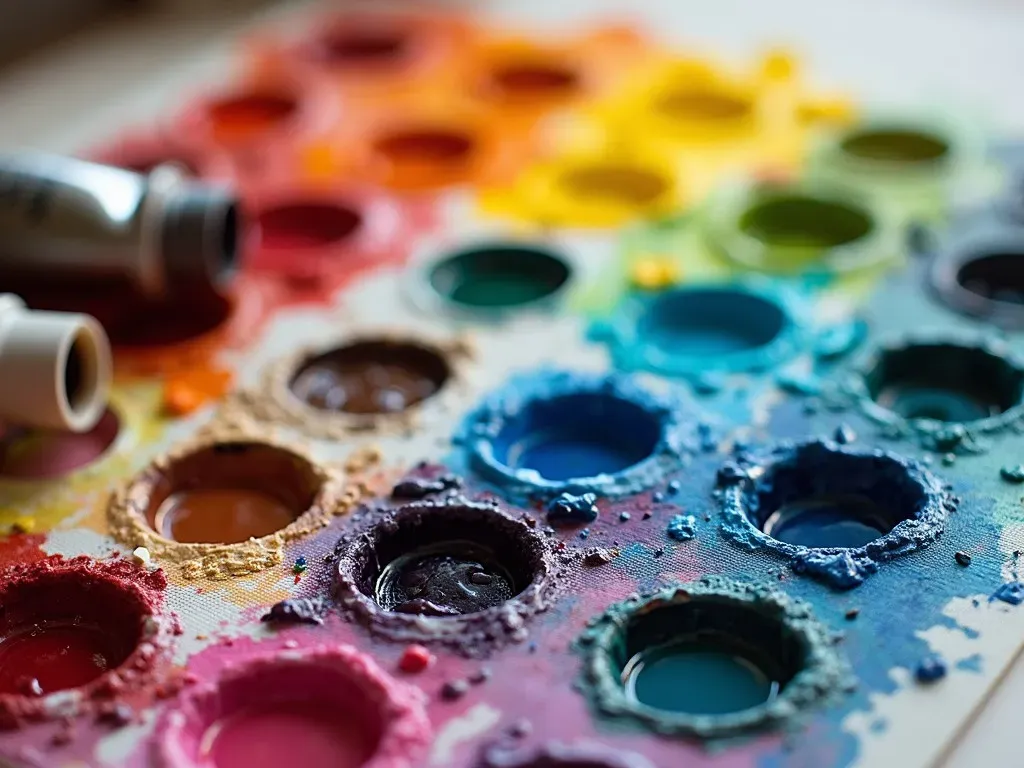Oil colors for beginners are a fundamental aspect of developing your painting journey. Learning to paint with oils can seem overwhelming due to the variety of colors available and the Techniques required. However, understanding the essential colors and their mixing capabilities simplifies this process significantly.
Why Choosing the Right Oil Colors Matters
Selecting the right oil colors is crucial for beginners, as it sets the foundation for their artistic growth. A basic yet versatile palette allows beginners to experiment, learn color mixing, and create beautiful artworks. Here’s a concise overview of some essential oil colors every beginner should consider:
Essential Oil Colors for Beginners:
| Color Name | Pigment Code | Characteristics |
|---|---|---|
| Titanium White | PW6 | Opaque, brightening agent |
| Cadmium Yellow | PY35 | Semi-opaque, vibrant light yellow |
| Alizarin Crimson | PR83 | Transparent, deep red |
| Ultramarine Blue | PB29 | Semi-transparent, rich blue |
| Burnt Sienna | PBr7 | Opaque, warm brown |
| Naples Yellow | PY41 | Opaque, soft yellow |
| Ivory Black | PBk9 | Opaque, warm black |
Mixing Basics
Understanding how to mix these basic oil colors can open a world of possibilities. Here are some general tips on mixing oil colors:
-
Complementary Colors: When mixed, complementary colors can create neutral tones. For example, mixing Ultramarine Blue with Cadmium Orange can produce various muted shades.
-
Tints and Shades: Adding white creates a tint, while adding black produces a shade. Experimenting with tints and shades can help you find the right tones for your painting.
-
Limited Palette: Start with a limited palette to prevent overwhelming yourself. Focusing on just a few colors encourages creativity and enhances color mixing skills.
Necessary Supplies for Oil Painting
To start your oil painting journey, it helps to know what Supplies are essential alongside your oil colors. Here’s a handy list:
- Oil Paints (as mentioned above)
- Brushes: Varied sizes, preferably with stiff bristles
- Canvas: Choose pre-stretched canvases for ease
- Palette: Wooden or glass palettes are ideal for mixing colors
- Mediums: Linseed oil or turpentine for thinning paint
- Rags or Paper Towels: For cleaning brushes
- Easel: A sturdy easel for comfortable painting
Tips for Choosing Quality Oil Colors
- Student vs. Artist Quality: Beginners often start with student-grade oil paints which are more affordable, but investing in artist-grade paints can yield better results over time.
- Manufacturer Reputation: Brands like Winsor & Newton, Gamblin, and Rembrandt are renowned for their quality and consistency.
To delve deeper into the qualities and specifications of various oil paints, you can visit My Modern Met.

Techniques to Explore
After gathering your supplies, it’s time to explore some basic oil painting techniques:
1. Wet-on-Wet Technique
This technique involves applying wet paint onto wet paint, allowing colors to blend seamlessly. It’s perfect for creating soft edges and vibrant landscapes.
2. Glazing
Applying a thin layer of transparent color over a dried layer creates depth. This is useful for portraits and creating luminous effects.
3. Impasto
This technique involves applying paint in thick layers. It adds texture and allows for dramatic effects, particularly in floral or abstract paintings.
4. Scumbling
A technique that involves brushing a thin mix of color over dried paint, typically using a drier brush. This adds subtle tones and highlights, enhancing the complexity of the artwork.
Color Theory Basics for Beginners
Understanding color theory is essential for creating vibrant compositions. Here are some fundamental concepts:
-
Color Wheel: Familiarize yourself with the color wheel to grasp the relationships between colors (primary, secondary, and tertiary).
-
Warm vs. Cool Colors: Warm colors (reds, oranges, yellows) evoke energy, while cool colors (blues, greens, purples) promote calm. Balancing these can create dynamic compositions.
-
Monochromatic Schemes: Using different tones of a single color can create a harmonious look while allowing exploration of color variations.

FAQs about Oil Colors for Beginners
What Are the Best Oil Colors for Beginners?
The best oil colors include Titanium White, Cadmium Yellow, Alizarin Crimson, Ultramarine Blue, Burnt Sienna, Naples Yellow, and Ivory Black. This selection allows for a broad range of mixing options.
How Much Oil Paint Should I Buy as a Beginner?
Start with small tubes (37ml/50ml) of each chosen color. As you become more comfortable and discover what colors you prefer, you can invest in larger tubes.
What Should I Avoid When Starting with Oil Colors?
Avoid overly complex palettes and expensive artist-grade oil colors initially. Stay focused on learning color mixing with a few essential colors.
Can I Mix Oil Colors with Acrylics?
It is not recommended to mix oil paints with acrylics as they use different binding agents, causing adhesion issues. Stick to one medium at a time for best results.
How Do I Clean My Brushes After Using Oil Colors?
Use solvents like mineral spirits or turpentine followed by soap and warm water to clean brushes. Always reshape the bristles after cleaning to maintain their form.
As you embark on your journey with oil colors, remember that practice is key. Explore different color mixes, experiment with techniques, and don’t hesitate to make mistakes—they’re part of learning! Enjoy the creative process and let your imagination soar!
